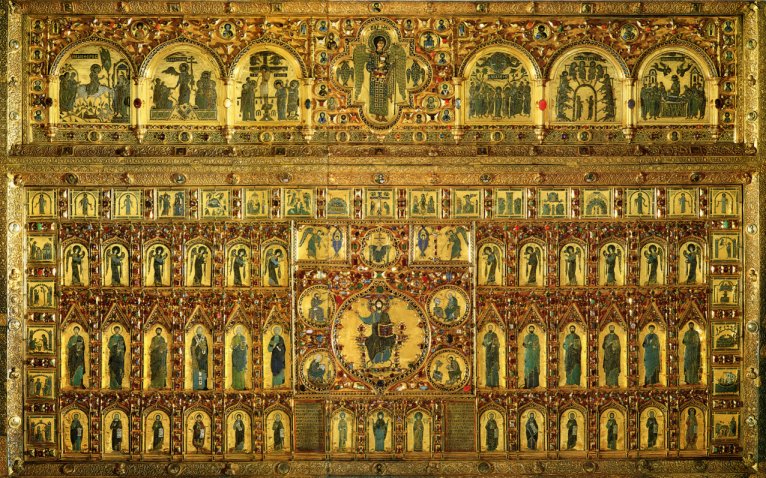The Pala d'Oro (Golden Pall) is one of the highlights of a visit to the Basilica of San Marco in Venice. It is a retable behind the high altar, though the interesting part I am going to look at faces the rear: for a small charge visitors are able to walk round to look at it. At busy times, which, these days is most months of the year, your time there is limited: a few years ago we visited in November and were blessed with a quiet basilica and an unhurried opportunity to contemplate this wonderful artwork.
The pala was created in three stages. The main part, showing the central panel of Christ Pantocrator with the Evangelists, the rows of angels, apostles, and prophets, the panels at the sides showing the story of St Mark, and the small panels above the angels showing feast days, dates from the early twelfth century. It was commissioned by the then doge, Ordelafo Falier, and made in Constantinople. The top panels, with the archangel Michael at the centre, were added around 1204. They were also a product of Constantinople; it is thought by some that they were stolen during the fourth crusade. Finally, the pala was given a makeover in the middle of the fourteenth century in the workshop of the Venetian goldsmith Bonensegna, whose signature appears on the pala, on the orders of Doge Andrea Dandolo. The arches over the various panels were created, and large numbers of gemstones (stolen from Constantinople in the crusades) were added.
A helpful source has been The Pala d’Oro of the Basilica of St Mark, Venice, Ferdinand Ongania, 1887. Translated by William Scott, though more recent scholars have cast doubt on some of his conclusions.
